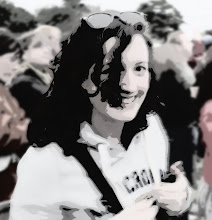I found this paper to be very useful in my background research. It discusses a handheld mobile guide, the design process and some important issues they came across when designing the guide.
'Location Aware Mobile Interactive Guides: Usability Issues' by Jonathan Broadbent and Patricia Marti
Overview
This paper deals with HIPS (Hyper Interaction within Physical Space) - a project funded by the European Commission, the aim of which is to develop a handheld electronic tour guide for cities/museums and the exploration of the physical environment. It hopes to support users in their everyday working/leisure activities
Integration:
- Handheld Computing
- Wireless Communications
- Positioning Technologies
System Guide - generate audio messages for finding items of interest and describing items with additional information, suggestions and alternate routes. Information will be generated based on maps, spatial direction. The system will integrate user requests, history of browsing and location.
The Design Process
When designing this system iteratively, the designers had four essential activities in mind to ensure understood and specified user needs:
- Context of use
- Effectiveness, efficiency and satisfaction
- Prototypes
- Evaluation of prototypes
User testing after installation of Museum of Santa Maria.
Tests: Time to complete a task, success rate, errors, satisfaction and fun
Collection of Data: Videotape; Questionnaire; Time and error measures
Diagnostic Evaluation: focus groups; heuristic evaluation; analytic evaluation; physical and cognitive operations and observational evaluation
Scenario Building: explore new forms of interaction; creation of real scenarios; share the experience; describe existing activities or envision new ones.
Scenarios were used for functional definitions, and to clarify thoughts on potential features.
Interesting Points
Location Aware mobile devices that permit the navigation of both a physical space and a related information space at the same time represents a new interaction paradigm.
It shows the important to decrease costs to produce for the mass market.
Robustness of device design depends on interactivity, the speed of response, how the information is to be presented, gradual degradation and effective feedback.
Design should be centred on user, instead of testing the validity of a data encryption algorithm. Human centred design ensures that the system is designed to suit their needs. The paper uses the iterative design process - Design, Test with Users, Redesign.
The designers hope to give a rich variety of options in an information space, rather than being bound to the physical constraints of the real world.
Information must be shown to the user in a way appropriate to the user and the context of use.
Testing of prototype must be done to eliminate sources of confusion and error and identify sources of enjoyment.
Networking aspect crucial. Contraints on storage (which may not apply to networked devices).
Centralising data will allow for greater simplification when downloading data. Updating can be done centrally in this way also.







